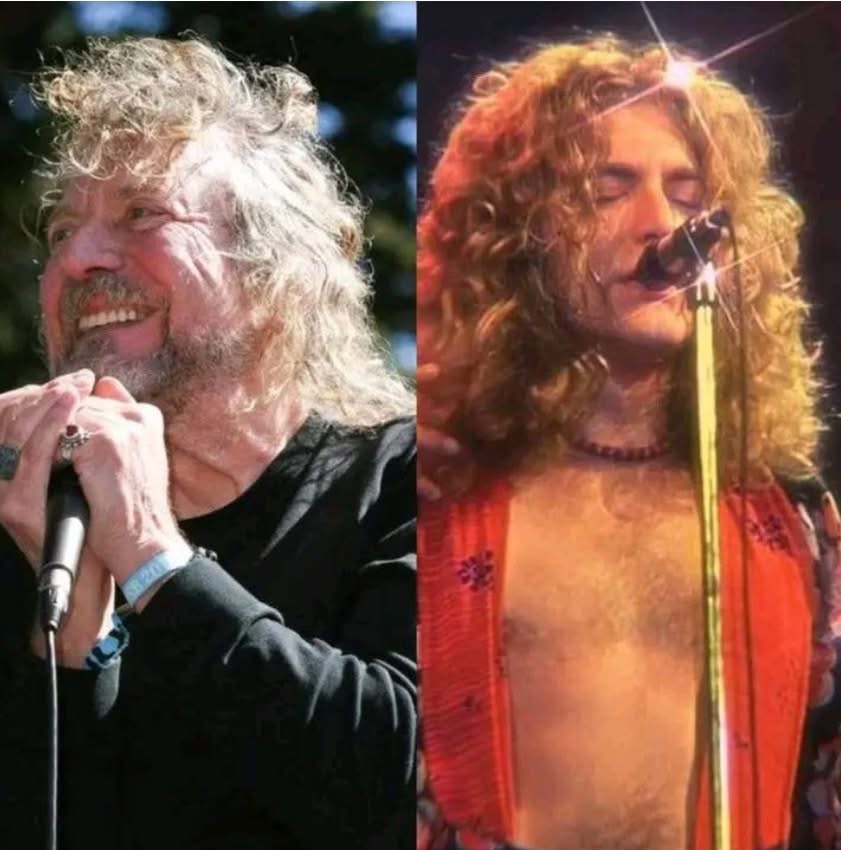Robert Plant, the legendary frontman of Led Zeppelin, has undergone a remarkable transformation throughout his career—both in appearance and musical direction. In the late 1960s and 1970s, Plant epitomized the archetypal rock star. With his long, golden curls, tight trousers, and open shirts, he exuded a charismatic and untamed stage presence that made him an icon of the rock-and-roll era. His powerful, high-pitched vocals became one of Led Zeppelin’s defining features, driving hits like “Stairway to Heaven” and “Whole Lotta Love” into rock history. Plant’s image was bold, flamboyant, and unrestrained, mirroring the raw energy of the music he fronted.
As the decades passed, Plant’s persona began to shift. Now in his 70s, his look has matured—his hair, once wild and golden, is shorter and lighter, and his style leans toward earthy, understated clothing that reflects his deeper connection to roots-based music. The fiery rock god has evolved into a seasoned artist with a more introspective and grounded demeanor.
Musically, Plant has ventured far from the hard rock anthems of his Zeppelin days. His recent work showcases a passion for folk, blues, and world music, with projects like his collaborations with bluegrass artist Alison Krauss earning critical acclaim. Their Grammy-winning album Raising Sand and its follow-up have highlighted Plant’s ability to adapt and thrive outside the arena rock spotlight. His voice, though less thunderous than in his youth, remains deeply expressive, layered with the richness of experience.
Despite the changes in style and sound, Robert Plant’s influence remains profound. He has gracefully embraced aging, choosing evolution over nostalgia, and in doing so, has reaffirmed his place as one of the most enduring and versatile voices in rock history.










